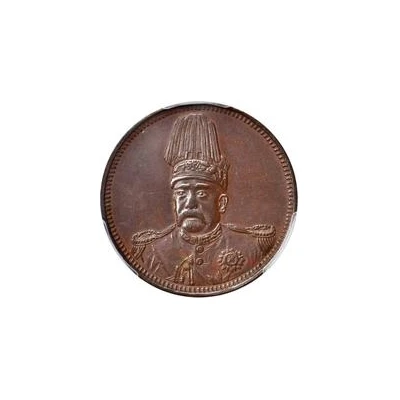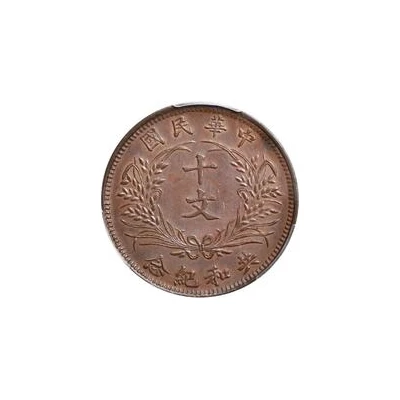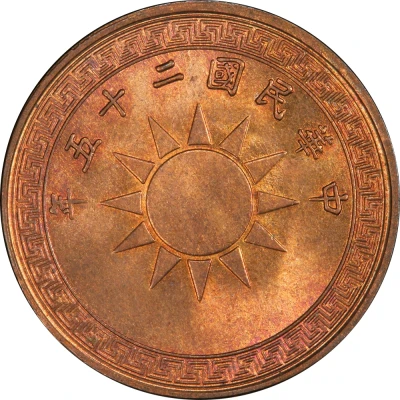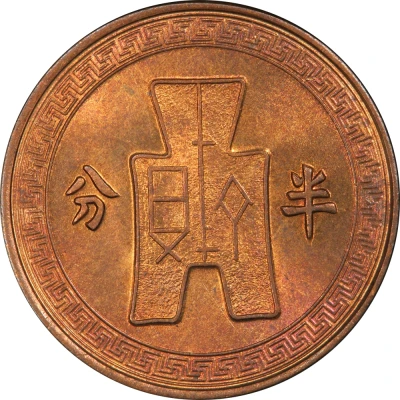


© Stacks Bowers
10 Cash Pattern; Founding of the Republic: Yuan Shikai; copper; thick rice stocks ND
1912 year| Copper | - | 29 mm |
| Issuer | Republic of China |
|---|---|
| Period | Republic (1912-1949) |
| Type | Pattern |
| Year | 1912 |
| Value | 10 Cash (Wen) (0.01) |
| Currency | Yuan (1912-1948) |
| Composition | Copper |
| Diameter | 29 mm |
| Shape | Round |
| Technique | Milled |
| Orientation | Medal alignment ↑↑ |
| Demonetized | Yes |
| Updated | 2024-10-04 |
| Numista | N#242565 |
|---|---|
| Rarity index | 95% |
Reverse
Two Chinese ideograms within wreath with more ideograms above and below.
Lettering:
國民華中
十
文
念紀和共
Translation:
Republic of China
10 Cash (Wen)
Founding commemorative coin
Engraver: Luigi Giorgi
Comment
This type is only known by patterns.Krause lists KM#Pn5 as having a "small bust" and KM#PnA6 as having a "large bust"; however, what exactly makes the bust large or small needs confirmation. KM#Pn5 is assigned as being equivalent to Hsu#13, and KM#PnA6 is assigned as being equivalent to Woodward#972, with those two additional references clearly depicting different types (showing differences in the thickness of the rice stocks on the reverse and the design of the badge insignia on the obverse). With that being said, for these pages on Numista, the attribution of what type is KM#Pn5 and KM#PnA6 is based solely on what is listed for the additional references.
Interesting fact
One interesting fact about the Pattern 10 Cash coin from Republic of China made of Copper is that it features a unique design that represents the transition from the Qing dynasty to the Republic of China. The obverse side of the coin depicts a portrait of Yuan Shikai, the first president of the Republic of China, while the reverse side features a stylized image of a rice stalk, symbolizing prosperity and abundance. This design was meant to reflect the country's shift towards modernization and its commitment to agriculture and economic growth.

